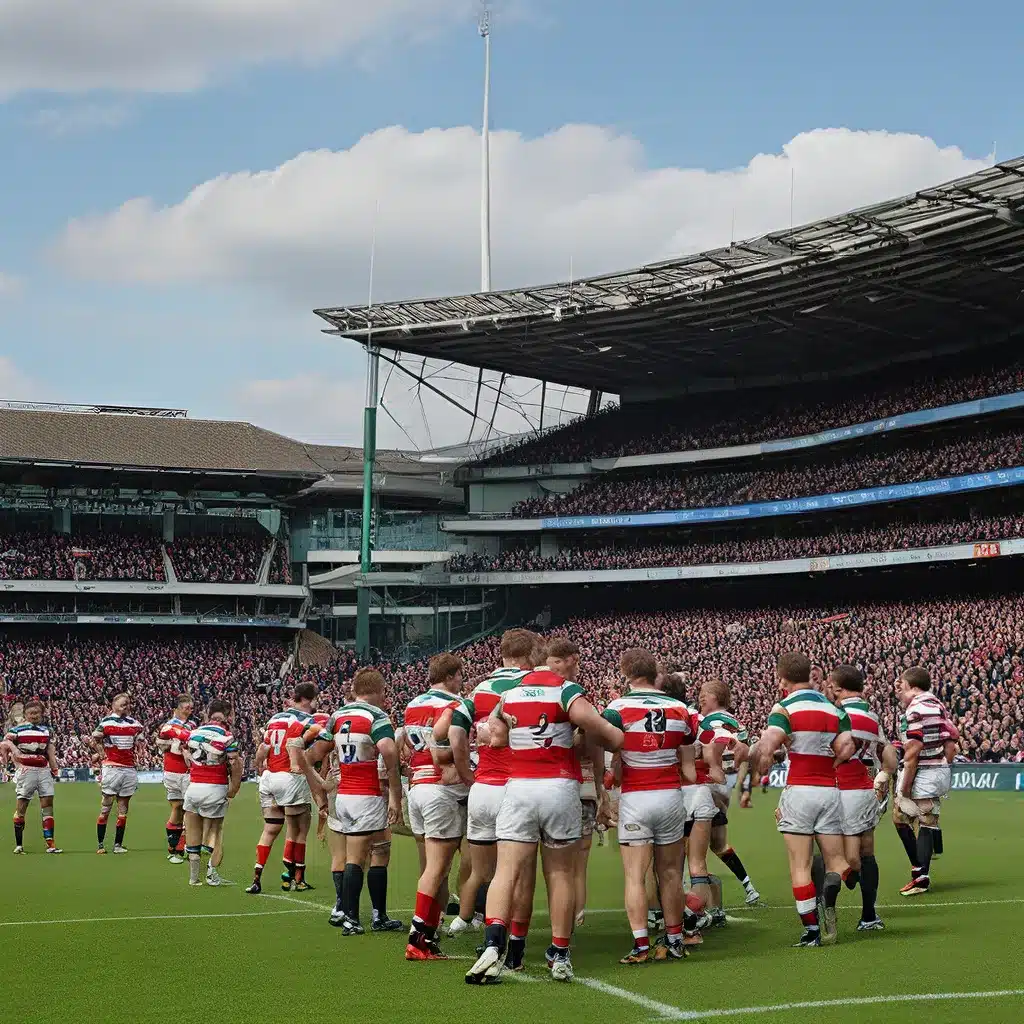
The Iconic Home of English Rugby
Twickenham Stadium, nestled along the banks of the River Thames in southwest London, stands as a hallowed ground for rugby enthusiasts around the world. As the largest dedicated rugby union venue and the second-largest stadium in the United Kingdom, it has hosted some of the most thrilling and iconic moments in the sport’s history.
Constructed in 1909, Twickenham’s origins can be traced back to a time when the sport of rugby was rapidly gaining popularity in England. The Rugby Football Union (RFU), the governing body of the game, recognized the need for a dedicated national stadium to serve as the heart of the English rugby community. After acquiring a plot of land in Twickenham, the RFU embarked on a mission to create a stadium that would become synonymous with the sport.
The original Twickenham Stadium was a modest affair, with a capacity of just 20,000 spectators. However, its significance far outweighed its physical dimensions. As the centerpiece of England’s international rugby matches, Twickenham quickly became a source of national pride, a place where the country’s finest players would don their white shirts and take to the field, representing the nation with unwavering passion.
Expansion and Renovation
Over the decades, Twickenham has undergone a series of expansions and renovations, transforming it into the modern, world-class stadium it is today. The most significant redevelopment took place in the late 1990s, when the stadium’s capacity was increased to 82,000, making it the largest dedicated rugby union venue in the world.
The 1990s renovation project saw the demolition of the historic East and West Stands, replaced by state-of-the-art facilities that blended seamlessly with the stadium’s iconic architecture. The new stands feature an impressive array of hospitality suites, corporate boxes, and modern amenities that cater to the growing demands of the sport’s global audience.
One of the most striking features of the redesigned Twickenham is the iconic twin towers that grace the stadium’s facade. These imposing structures, modeled after the original 1909 design, have become a beloved symbol of the stadium and a source of pride for English rugby fans.
The Cauldron of Passion
Twickenham Stadium is not merely a venue; it is a cauldron of passion and tradition that has witnessed some of the most thrilling moments in rugby history. From the thunderous roar of the crowd during a tightly contested match to the stirring renditions of the national anthem before kick-off, the atmosphere within Twickenham is truly electric.
The England national team** has enjoyed a long and illustrious history at Twickenham, with the stadium serving as their home fortress. Countless victories, memorable tries, and heartbreaking defeats have all played out on the hallowed turf, creating a rich tapestry of memories that bind the team and its supporters together.
One of the most iconic moments in Twickenham’s history came in 2003, when England lifted the Rugby World Cup trophy on home soil, defeating Australia in a tense final. The roar of the crowd as Jonny Wilkinson’s match-winning drop goal sailed through the posts remains etched in the minds of rugby fans worldwide.
The Spiritual Heart of English Rugby
Beyond its role as the home of the national team, Twickenham Stadium also serves as the spiritual heart of English rugby. The RFU’s headquarters are located within the stadium’s grounds, and it is from here that the governing body oversees the development and growth of the sport at all levels.
The stadium itself plays host to a diverse range of rugby events, from the annual Six Nations Championship matches to the Premiership Rugby final and the prestigious European Champions Cup finals. Each of these events draws in tens of thousands of passionate fans, creating an electric atmosphere that is unmatched anywhere else in the world.
Twickenham’s significance extends beyond the confines of the stadium itself. The surrounding area has become a hub for rugby enthusiasts, with numerous pubs, shops, and fan zones catering to the dedicated supporters who make the pilgrimage to this hallowed ground.
A Multifaceted Venue
While Twickenham Stadium is undoubtedly a temple of rugby, it has also evolved to become a versatile venue that hosts a variety of other events. The stadium’s expansive facilities and modern infrastructure have made it an attractive destination for concerts, conferences, and even corporate events.
Over the years, Twickenham has welcomed some of the biggest names in the music industry, with performers such as Muse, Coldplay, and the Rolling Stones gracing its stages. These events not only showcase the stadium’s adaptability but also contribute to its status as a landmark destination within the broader cultural landscape of the United Kingdom.
A Legacy of Greatness
As the Rugby World Cup 2023 approaches, all eyes will once again turn to Twickenham Stadium, as it is set to host several high-profile matches, including the final. This prestigious event will undoubtedly add to the stadium’s already impressive legacy, cementing its place as one of the most iconic and influential rugby venues in the world.
For rugby enthusiasts, a visit to Twickenham Stadium is a rite of passage, a chance to immerse themselves in the rich history and traditions of the sport. The stadium’s blend of modern amenities and timeless charm, coupled with the unwavering passion of its supporters, makes it a must-visit destination for any true fan of the game.
As the sport of rugby continues to evolve and captivate audiences worldwide, Twickenham Stadium will undoubtedly remain a beacon of excellence, a place where legends are forged, and the spirit of the game is celebrated in all its glory.

